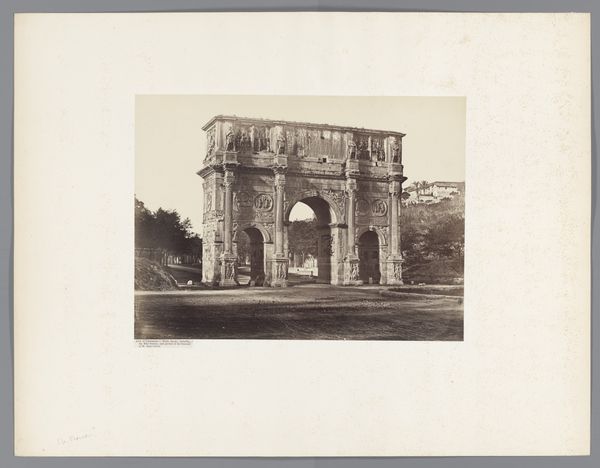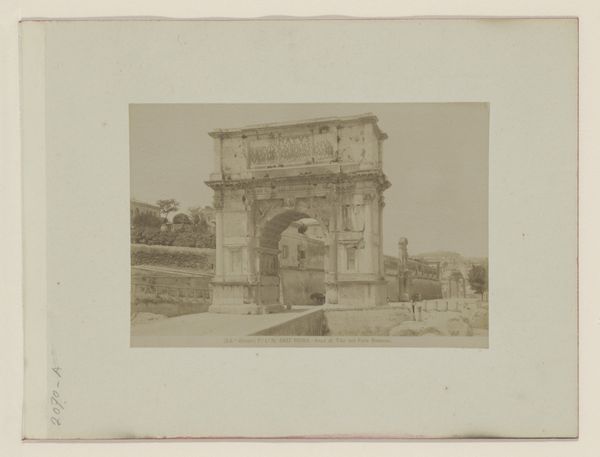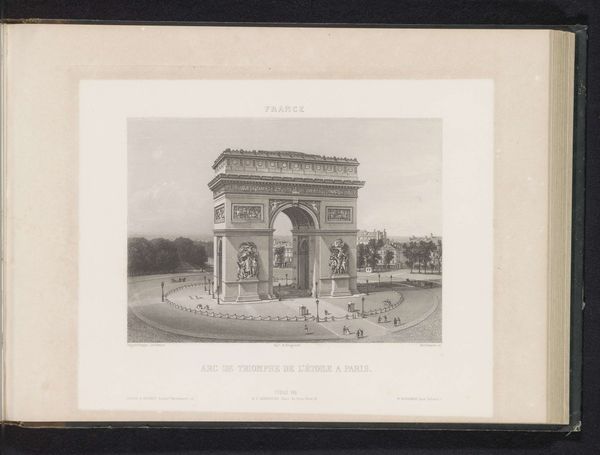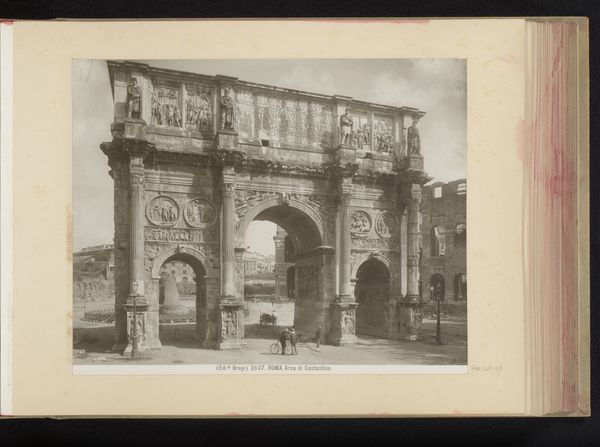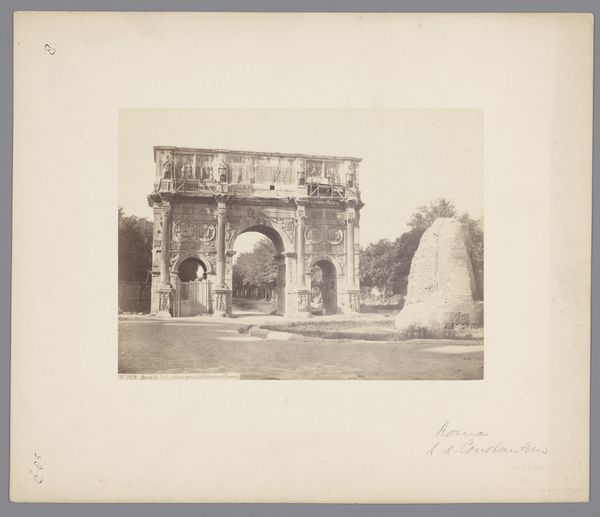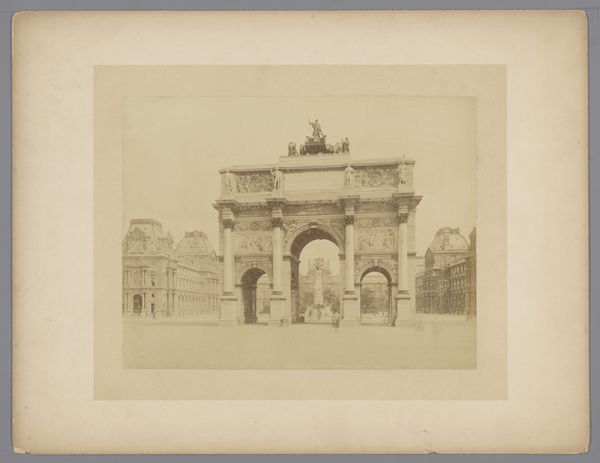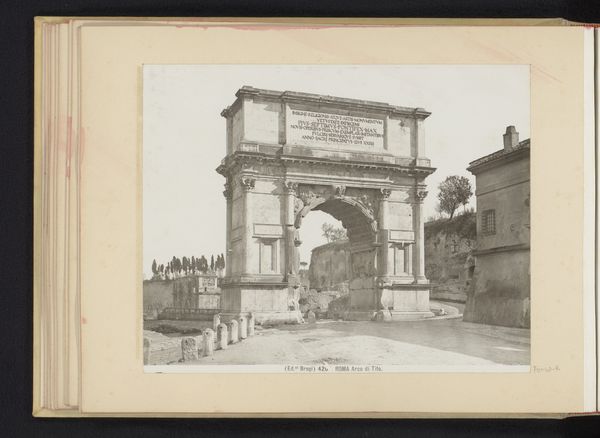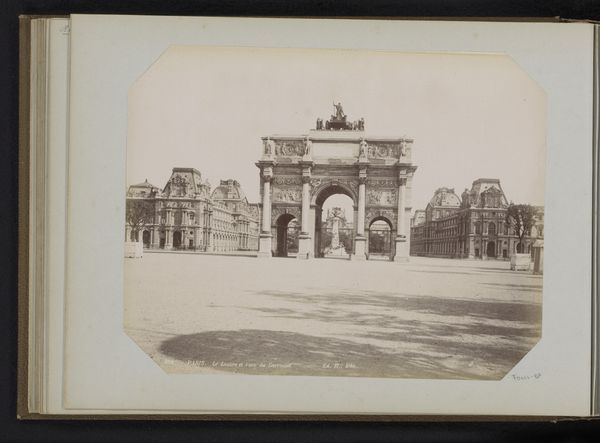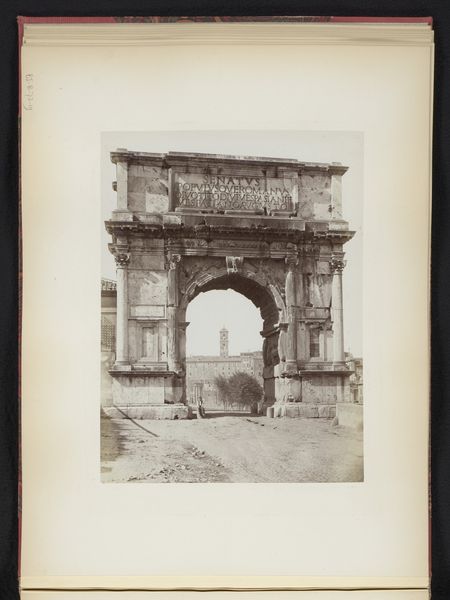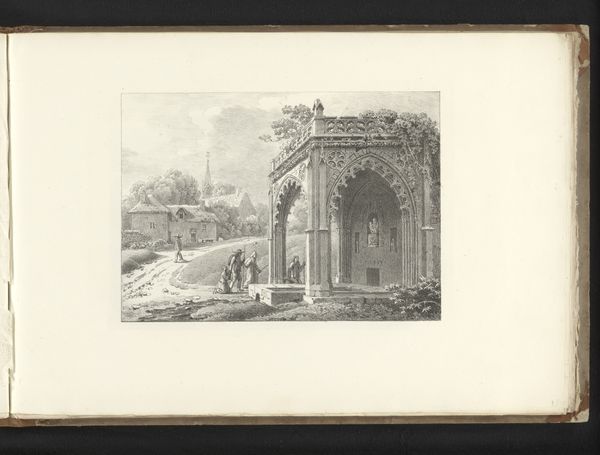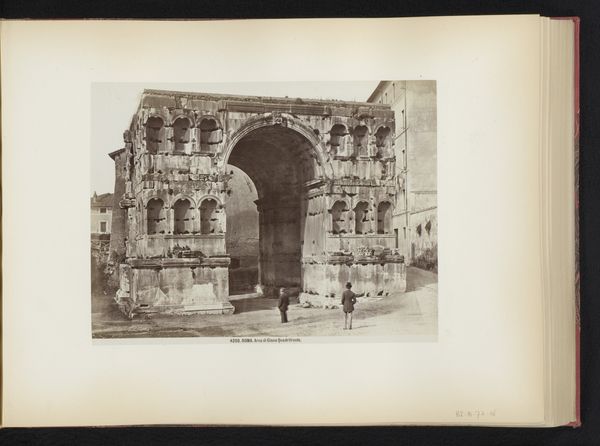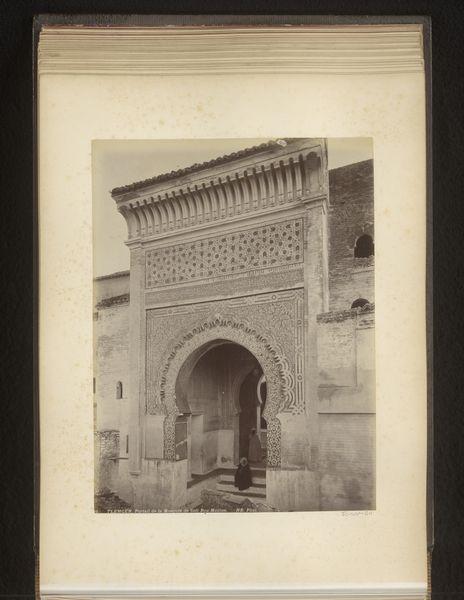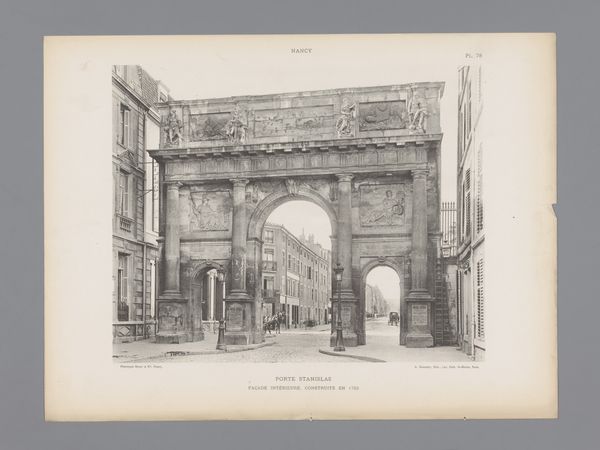
photography, architecture
#
photography
#
romanesque
#
cityscape
#
architecture
Dimensions: Image: 8 11/16 × 11 5/16 in. (22.1 × 28.7 cm) Sheet: 12 1/8 × 18 1/2 in. (30.8 × 47 cm)
Copyright: Public Domain
Curator: What strikes you first about this photograph of the Arco di Constantino? It was captured by Eugène Constant sometime between 1848 and 1852. Editor: The overwhelming weight of history, without question. The monochrome palette adds to the sense of antiquity; the composition seems almost overwhelmed by the sheer mass of the arch itself. Curator: And of course, the subject itself is freighted with political and social weight. The Arch, erected in the early fourth century AD, marked Constantine's victory, but more generally represents the triumphal imagery of the Roman Empire. It stood as an announcement of power, of dominance. Editor: Power codified into architectural form. Looking closer, I’m particularly drawn to the texture of the stone and the meticulous details captured within the sculptural reliefs. It's truly impressive. The shadows give it volume, make it even heavier. Curator: Exactly! Constant’s lens translates architecture into an intensely visual experience. Think about photography at this stage: the relatively new medium provides new ways to distribute and visualize images of power—both solidifying Roman history and imbuing it with a fresh contemporary vision. Editor: A visual shorthand, if you will. Reproducing Rome. But tell me more about Constant; how does this particular cityscape contribute to an understanding of the photographer himself, and the socio-cultural conditions in which he operated? Curator: Constant’s place is within that early history of photography, one of documenting ancient Roman sites. He captured the mood, a revival of antiquity. But beyond the formal qualities, the proliferation of images like these, sold and traded and seen, spoke to a broader fascination with and appropriation of the Roman Empire by European powers during the mid-19th century. Editor: So the act of photographing these sites becomes almost an act of possessing them? Of taking cultural ownership through reproduction and dissemination? I think there is a subtle balance in terms of monochrome palettes as a political message, the texture against social factors involved. Curator: Yes, that interplay between documentation and appropriation makes early photography so potent a field to examine. And for my own perspective, seeing how photography shapes visual understanding, framing reality within form—it's endlessly fascinating.
Comments
No comments
Be the first to comment and join the conversation on the ultimate creative platform.
